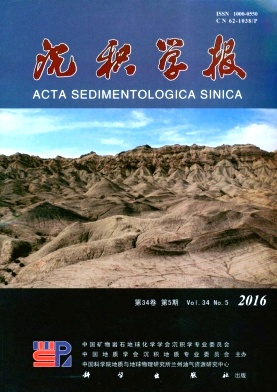Main Controlling Factors of Oilliness Property of Tight Sandstone Reservoir within Source Rock in Continental Depression Basin: A case of Gaotaizi oil reservoir in Qijia sag of central depression area in northern Songliao Basin
doi: 10.14027/j.cnki.cjxb.2016.05.018
- Received Date: 2015-10-15
- Rev Recd Date: 2016-01-25
- Publish Date: 2016-10-10
-
Key words:
- non-marine depression basin /
- Qijia sag /
- Gaotaizi oil-layer /
- tight sandstone /
- oil-bearing property /
- controlling factor
Abstract: Typical tight sandstone oil within hydrocarbon source rocks is considered in Gaotaizi oil-layer of Qingshankou Formation in Qijia Sag, located in central depression area of northern Songliao Basin. Macro- and micro-analysis of oil-bearing property and in-depth study of the main controlling factors have been carried out in reservoir, which show that oil-bearing property of the reservoir of Gaotaizi oil-layer is mainly controlled by sedimentary micro-facies, diagenesis and quality of source rock. Favorable sedimentary microfacies controls oil enrichment in reservoir. Macro pore throats are developed in sandbodies of mouth bars and distal sandbars, where the physical properties are good enough to provide preferential pathways for migration and meanwhile relatively developed storage space can also provide more entrapment habitats. The sedimentary micro-facies is the critical geological factor controlling the distribution of "sweet spots" within Gaotaizi oil-layer. Diagenesis controls the differential distribution of hydrocarbon, and mechanical compaction and cementation led to tightness of reservoir before the large-scale migration-accumulation. While in local sandstones with weak cementation and heavy corrosion developed macro pores and throats. In the later charging process differential entrapment took place in the reservoir sandstones, having different levels of shows. Source rock quality controls the level of oil occurrence within reservoir. Good-excellent quality source rock can provide abundant hydrocarbon and powerful charging dynamics. And, therefore the hydrocarbon can be migrated to and accumulated in reservoir within the source rocks. So, the shows are common even though the sand bodies may be thin and with bad physical properties, showing that the low-limits of physical properties are relatively low. While in bad-middle quality source rock area the sand bodies are thick with better physical properties, but the oil-bearing property is controlled by the combination of source rock quality, sedimentation and diagenesis. So the shows are commonly bad, only the middle part with good physical properties of sand bodies bear oil and more dry sand bodies are discovered, too. "Sweet spot" zones are principally distributed in the mature source rock area where multiple series of oil-layers are staggered and overlapped. A conclusion can be drawn that in the mid-north oil-bearing sand bodies are of thick cumulative thickness and good physical properties, but to the south they get worse. In all the "sweet spot" zones 1.5×108t of resources can be estimated, which offers exciting exploration prospect.
| Citation: | ZHANG JinYou. Main Controlling Factors of Oilliness Property of Tight Sandstone Reservoir within Source Rock in Continental Depression Basin: A case of Gaotaizi oil reservoir in Qijia sag of central depression area in northern Songliao Basin[J]. Acta Sedimentologica Sinica, 2016, 34(5): 991-1002. doi: 10.14027/j.cnki.cjxb.2016.05.018 |






 DownLoad:
DownLoad: